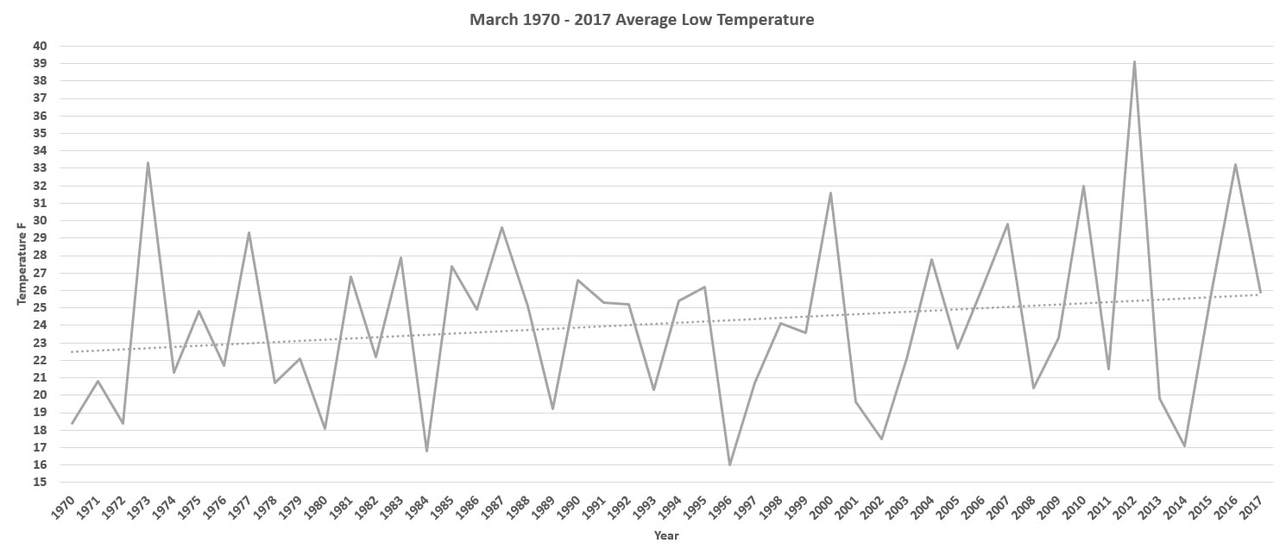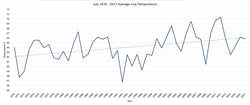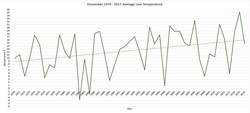What is Climate Change?
Many people have a misconception of Global Warming/Climate Change, what it is and what it isn't, and there are many disagreements as a result. What is more important is in understanding how it works so that we can better prepare ourselves, family and friends. Climate is long term trends of warming or cooling, while weather is short term, such as a cold winter or a heat spell, but neither are signs of Climate Change. We have experienced Climate Change due to Global Cooling from the 1940's into the 70's in North America, but today our direction has reversed and this is why Climate Change due to Global Warming is an appropriate phrase, but this doesn't mean that every region in the world is experiencing warming at the same rate, or even warming at all. Some regions are actually cooling, but the overall trend is warming. In all of these cases, warming and cooling, there can be found a cause and affect, because heat cannot be created or destroyed, meaning there is a source and cause.
The heat of our world is generated from the Earth and the interaction with the sun. For warming or cooling to occur, the Earth itself must increase of decrease in heat, and this heat creates our weather on the surface. Considered insignificant by science and acting as only a heat sink, this activity of our world is classified as energy conservation and is far more dynamic than science currently understands. When more energy is conserved than released, warming occurs over time, and the reverse is also true. Time is the element that our world uses to heat and cool, just as our thermostat turns on and off our furnace. While our furnace may turn on 20 times in a day to keep our home warm in the winter, it takes 20 years for our world to replicate this.
As our world heats it will retain it longer delaying the onset of winter, and this is demonstrated in the following graphs. When the winter cycle declines, and the summers lengthen, there is an overrun of energy that carries into the next year. Over many years the surface environments begin to experience alterations in their normal climate cycles, and this has been given the name, "Global Warming" and "Climate Change."
Although many people associate a longer seasonal length as something that is good for crop production, there are also other variables that severely offset this gain, such as invasive species and alterations in the typical precipitation that are associated with a warming environment.
The heat of our world is generated from the Earth and the interaction with the sun. For warming or cooling to occur, the Earth itself must increase of decrease in heat, and this heat creates our weather on the surface. Considered insignificant by science and acting as only a heat sink, this activity of our world is classified as energy conservation and is far more dynamic than science currently understands. When more energy is conserved than released, warming occurs over time, and the reverse is also true. Time is the element that our world uses to heat and cool, just as our thermostat turns on and off our furnace. While our furnace may turn on 20 times in a day to keep our home warm in the winter, it takes 20 years for our world to replicate this.
As our world heats it will retain it longer delaying the onset of winter, and this is demonstrated in the following graphs. When the winter cycle declines, and the summers lengthen, there is an overrun of energy that carries into the next year. Over many years the surface environments begin to experience alterations in their normal climate cycles, and this has been given the name, "Global Warming" and "Climate Change."
Although many people associate a longer seasonal length as something that is good for crop production, there are also other variables that severely offset this gain, such as invasive species and alterations in the typical precipitation that are associated with a warming environment.
Using the low temperatures at night, the amount of energy heat that is retained overnight, we can observe these changes over time.

Here we can see that in the month of March the temperature has risen from an average of 22.5F to just under 26 today, a 3.5F rise.

In July we see the temperature was averaging 62F, and now 66F, a 4F rise, just slightly greater than March.

in December, once averaging 9F, has now increased to 16F, a 7F rise and more than double the month of March.
Because the energy is trapped beneath the soil surface, it takes time to release this energy. Once the leaves fall the transpiration cycle stops further increasing this warming effect by shutting down convection resulting in a slower rate of heat loss. Additionally, photosynthesis stops and CO2 levels begin to rise. By March, just before the spring bloom, they are at their highest and yet the rate of rise in temperatures are half this amount. If it was atmospheric warming, the temperature rise would be far more stable across the months, and if CO2 was the facilitator, then the temperature deviations should be greatest in March when concentration levels are at their greatest concentration levels.
Because the energy is trapped beneath the soil surface, it takes time to release this energy. Once the leaves fall the transpiration cycle stops further increasing this warming effect by shutting down convection resulting in a slower rate of heat loss. Additionally, photosynthesis stops and CO2 levels begin to rise. By March, just before the spring bloom, they are at their highest and yet the rate of rise in temperatures are half this amount. If it was atmospheric warming, the temperature rise would be far more stable across the months, and if CO2 was the facilitator, then the temperature deviations should be greatest in March when concentration levels are at their greatest concentration levels.